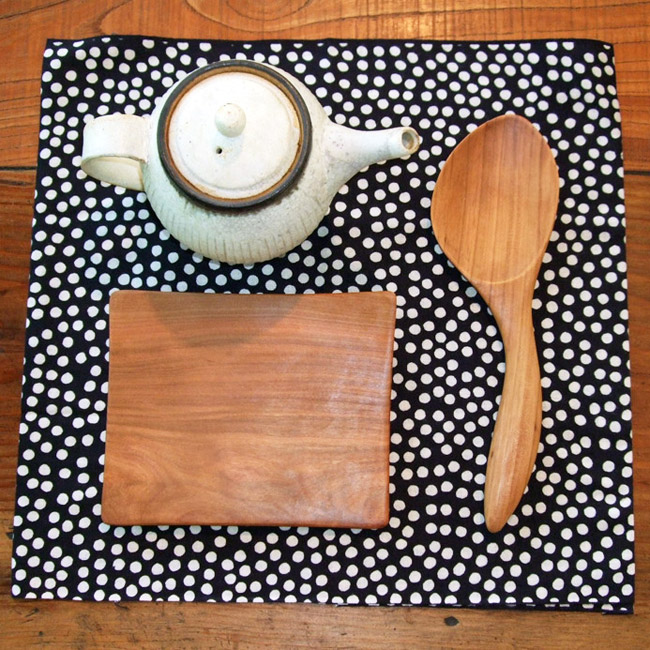Studio Visit: Adam Silverman
See the bright Glendale space where the ceramic artist came into his own

Visiting ceramicist Adam Silverman‘s studio, we spy the artist surveying the vastness of his new space in Glendale, California. A large ceramic egg-shaped piece—glazed with a white crackled surface akin to barnacles—sits next to a smaller one the color of volcanic ash. Both pieces appear like excavated artifacts or treasures brought home from another planet.
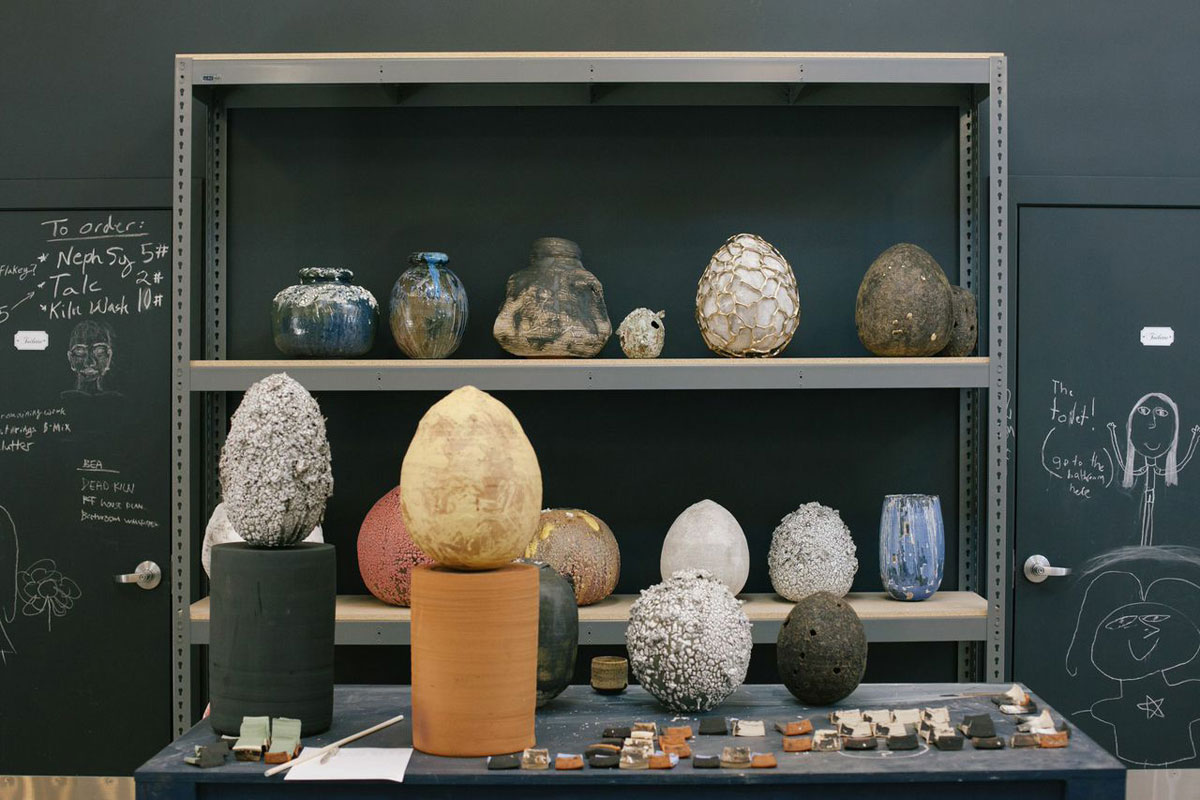
Silverman‘s space—a light-filled oasis of more than 4,000 square feet—is much bigger than his 1,000 square foot Atwater Pottery studio or his in-house space at Heath Ceramics Los Angeles, where until recently he worked in residence as creative director. “My life is very different now. It is just me. My work really evolved while I was at Heath. It got bigger and lumpier. That is continuing here and there is room for it to get even bigger.”
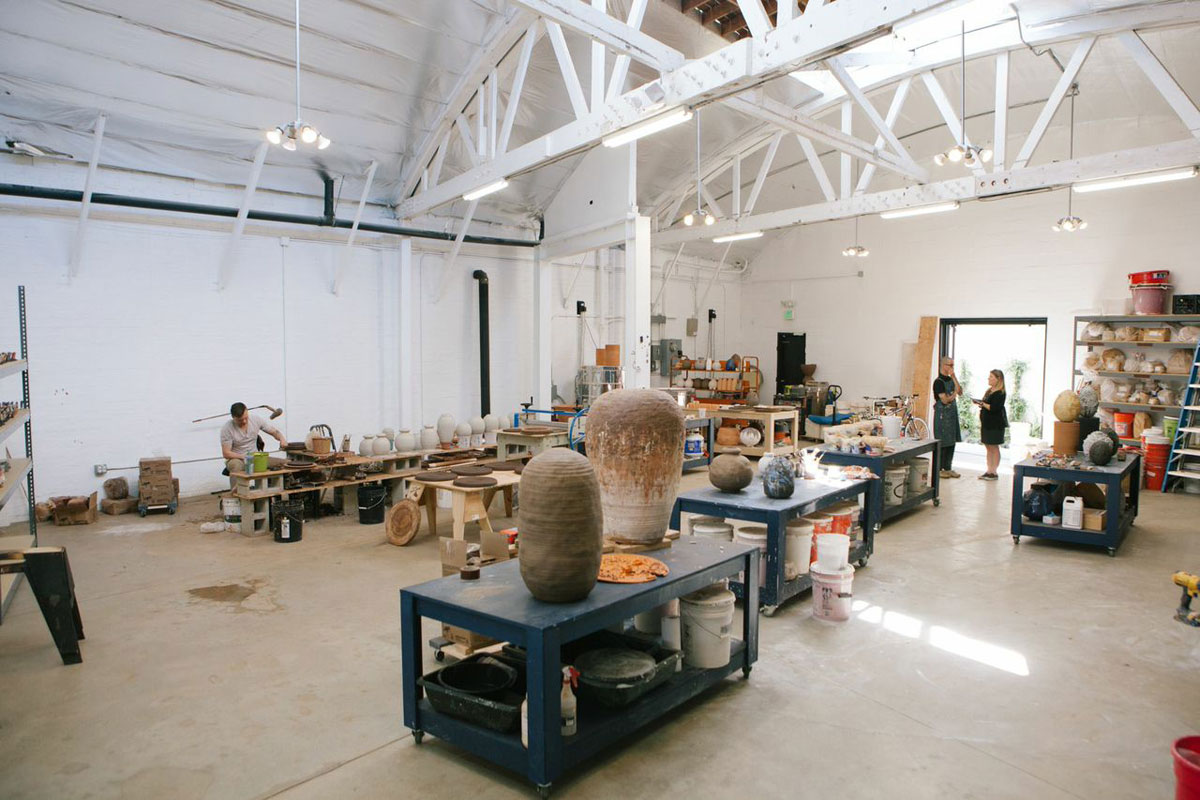
Nestled among car repair shops and warehouses in Glendale, Silverman has found the perfect building for his work space. Silverman (a former architect) designed the layout of his new studio to utilize every square foot of raw space—creating a large work area for throwing, glazing and firing work; along with a gallery, kitchen, two offices and a garden designed by Matthew Brown.
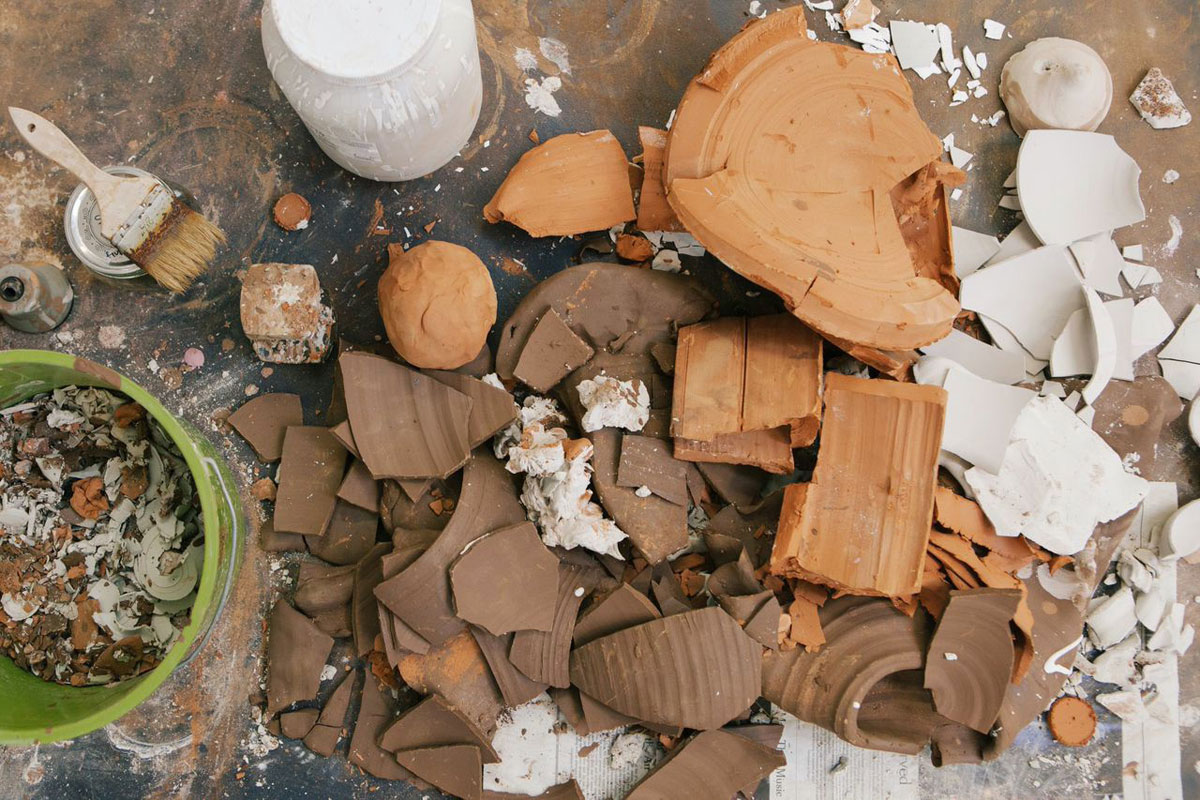
In the garden, Silverman looks at the ivy beginning to grow up the back wall; large pots sit among the foliage. “Some of these pieces have big cracks, but I really like them,” he tells CH. “A lot of these things get glazed and re-fired and glazed and re-fired and at some point they can’t take it any more. Sometimes I open the kiln and they are cracked and in pieces.”

For the interior, Silverman chose furniture on wheels for maximum flexibility. His most recent addition is an industrial metal shelving unit set up to display his growing collection of glaze tests chips. With so many projects, shows and commissions, Silverman uses every inch of the space. Currently he runs four kilns of varying sizes for different scale works, while a fifth kiln is set to be rigged with propane and fire outside—cowboy-style. With sunshine streaming through the windows of his studio, Silverman tells us, “Even though I have been making ceramics my whole life, I came into my own here. In terms of the light and the space, it has an influence.”

With past shows influenced by the color and drama of bullfighting and installations that were informed by his architecture background, Silverman’s current inspirations are more abstract. “It’s more trying to push shapes, making them bigger. And surfaces, making them more textural. One change I can see, up until now, most of the texture has been through layering glazes to build up a texture. Now I am pushing the pots themselves.” Some of the pieces have been punched from the inside or have had holes broken in them. Silverman has begun a new technique to throw pots, which involves then lumping clay onto the outside. “I shove scraps onto the pot. I make the pot. Then I cover it in slip so it is wet and sticky and just start shoving scraps on it or sticking them into it. Then it will dry and some of them will fall off. Then I will glaze it a couple of times. Now it has some integrity, but before the glaze is on some stuff still drops off.” Silverman describes the finished product as raw, or more aptly: crude. “Crude is good. That is my motto.”
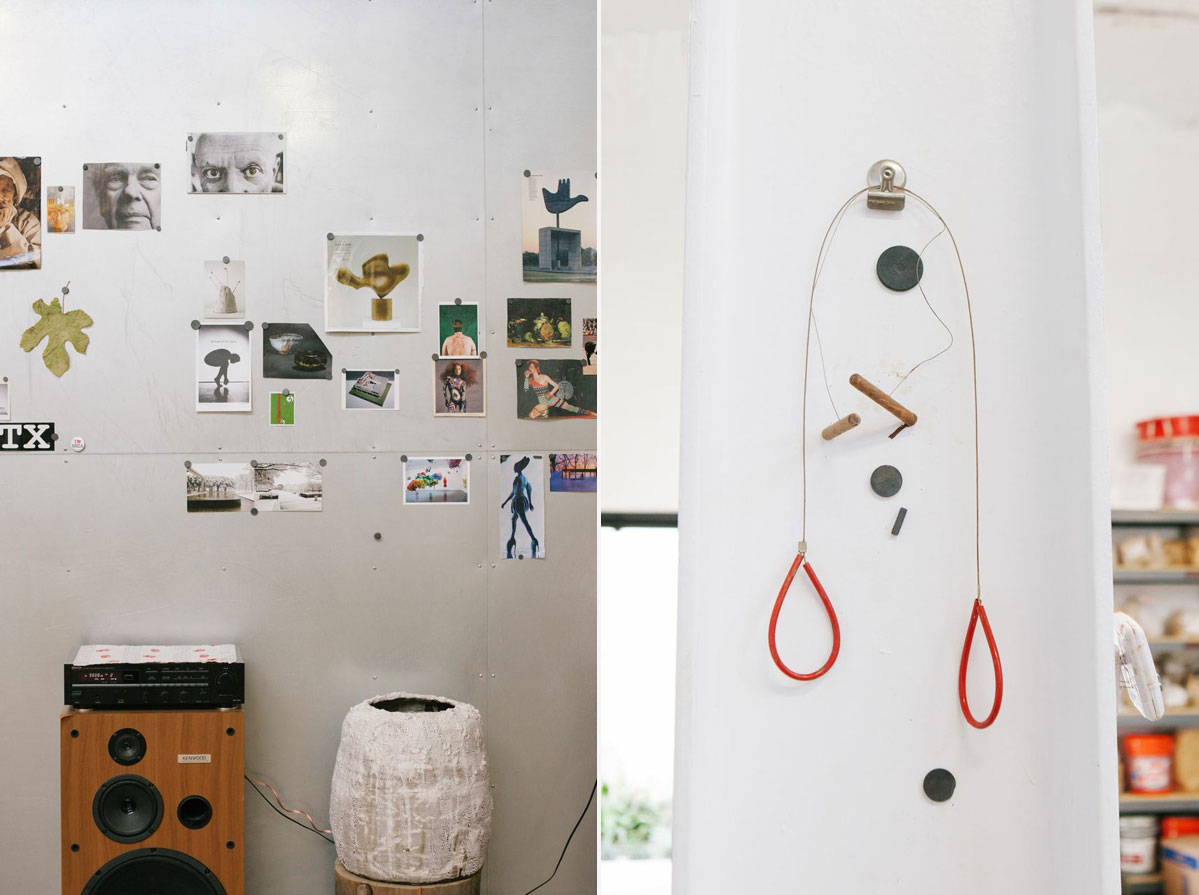
Silverman works with three clays and glaze components from Laguna Clay Company. He primarily works with the black clay that has a lot of iron and manganese in the mix. Then he creates striking surfaces by layering glazes. These textures are what he has become best known for, and they come from a slightly mysterious alchemy that combines a knowledge of certain materials, experimentation and a little luck. “In some cases, it is a combination of ingredients. In some cases, it’s a primary ingredient that makes it bubble or gas and for others something painted into the pot that causes whatever is on top of it to react. There are different ways of getting there. It is actually ridiculously complicated.”

This month, Silverman has a show opening at Tokyo’s Curator’s Cube. In May, he will be working with Friedman Benda at New York’s Collective Design Fair. Also in May, Silverman’s book (a collaboration with Kohei Oda) “Grafted: Plants by Kohei Oda | Pots by Adam Silverman ” will be released.
Images by Jenny Kim

